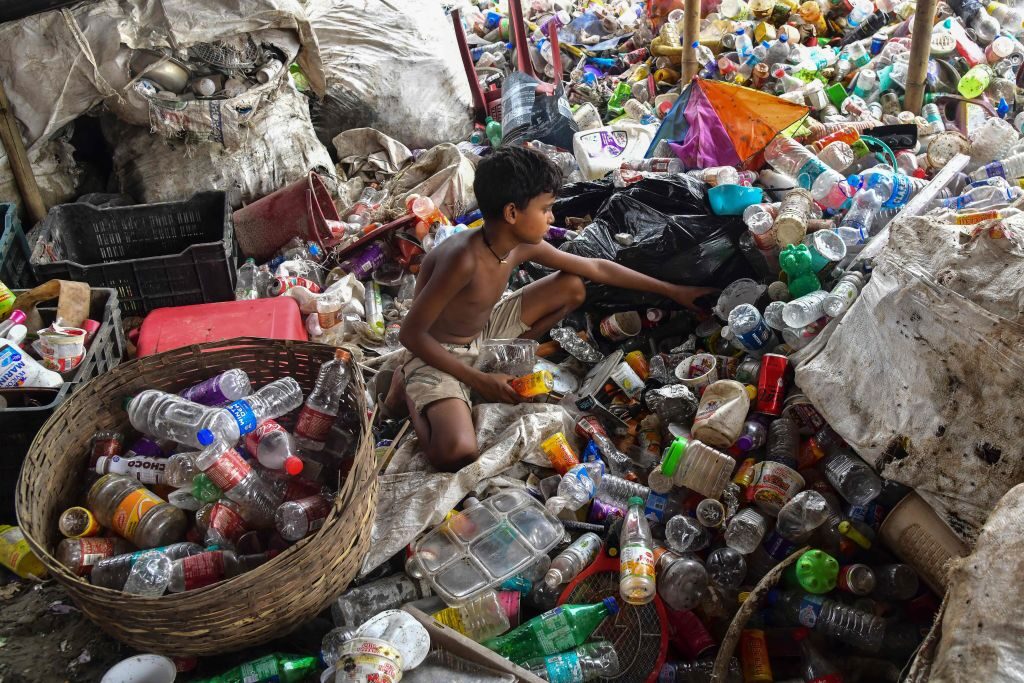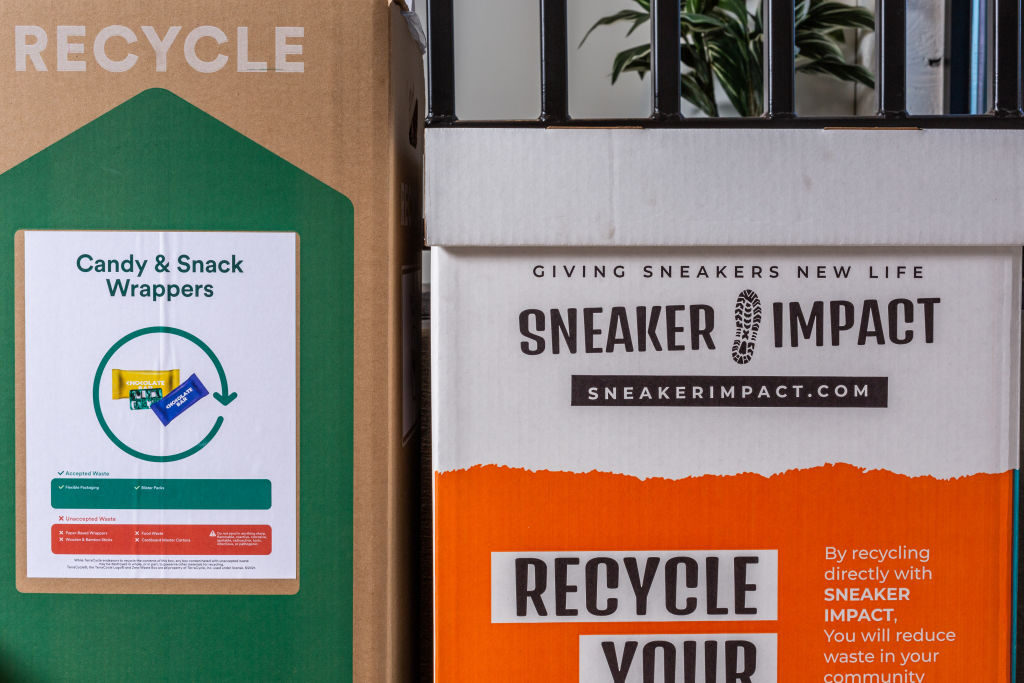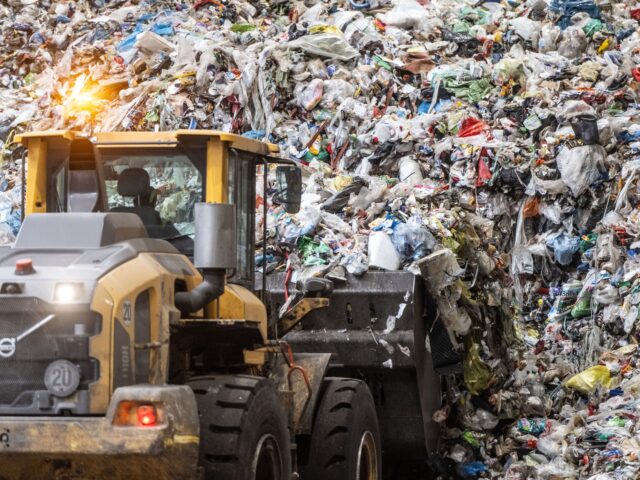Plastic pollution has long been the favoured cause of climate activists, with demands for consumers to recycle their plastic trash “for the good of the planet” all while using less.
A report released Monday now claims the promise of creating an efficient, circular economy through recycling is “fiction” with households producing more negative impacts on the environment – not less.
Titled “Circular Claims Fall Flat Again,” the Greenpeace study found some 51 million tons of plastic waste generated by U.S. households in 2021, only 2.4 million tons were recycled, or around five percent.
After peaking in 2014 at 10 percent, the trend has been steadily decreasing, especially since China stopped accepting the plastic waste from other countries in 2018.
Virgin production — of non-recycled plastic, that is — meanwhile is rapidly rising as the petrochemical industry expands, lowering costs and making plastic products more available than ever before.
Anyone who claims to care about reducing pollution who is not focused like a laser on world champion polluter China is either ignorant or a liar. https://t.co/N157cXiI7M
— Breitbart News (@BreitbartNews) July 28, 2022
“Industry groups and big corporations have been pushing for recycling as a solution,” Greenpeace USA campaigner Lisa Ramsden told AFP.
“By doing that, they have shirked all responsibility” for ensuring that recycling actually works, she added. She named Coca-Cola, PepsiCo, Unilever and Nestle as prime offenders.
According to Greenpeace USA’s survey as seen by AFP, only two types of plastic are widely accepted at the nation’s 375 material recovery facilities.
The first is polyethylene terephthalate (PET), which is commonly used in water and soda bottles; and the second is high density polyethylene (HDPE), seen in milk jugs, shampoo bottles and cleaning product containers.
These are numbered “1” and “2” according to a standardized system in which there are seven plastic types.
But being recyclable in theory doesn’t mean products are being recycled in practice.
Hasbro's Monopoly is getting a woke remake. Community Card options may include being penalized for not recycling your trash. https://t.co/NVWWyuJB7u
— Breitbart News (@BreitbartNews) March 21, 2021
The report found that PET and HDPE products had actual reprocessing rates of 20.9 percent and 10.3 percent, respectively — both down slightly from Greenpeace USA’s last survey in 2020.
Plastic types “3” through “7” — including children’s toys, plastic bags, produce wrappings, yogurt and margarine tubs, coffee cups and to-go food containers — were reprocessed at rates of less than five percent.
This is not the first time the idea of plastic recycling as an environmental benefit has been challenged.
As Breitbart News reported, in 2018 green recycling policy was deemed to be killing the oceans with plastic pollution while piling up on land in third world countries, a study by a Finnish public health expert outlined.

A boy sorts recyclable plastic collected at a garbage dumpsite in Guwahati on June 4, 2022. (BIJU BORO/AFP via Getty Images)
The report, written for the Global Warming Policy Foundation by Mikko Paunio, adjunct professor in general epidemiology at the University of Helsinki, was titled Save the Oceans – Stop Recycling Plastic. He stated:
The title may sound odd to ordinary people, but the sad fact is that the global ‘recycling’ industry has significantly added to the marine plastic litter problem.
I have put recycling in quotes, because only a small fraction of plastic recovered from consumers is actually recycled: the material collected is dirty and so mixed up that it is impossible to produce the high-quality raw material required by, for example, the food-packaging industry.
Most recovered plastic is simply burned or dumped: on land, in rivers, or even directly in the oceans.
The report went on to state rich countries, unable to recycle waste in line with the targets imposed on them, have simply chosen to dump it — plastic, paper and cardboard — on poor ones who then struggle to process it – if at all.
Lower environmental standards in much of Asia has made it cheaper to manage waste there and low-quality recycled plastic can sometimes be profitably produced from these waste streams, albeit in highly polluted conditions.
The sensible and effective solution to plastic waste, says Paunio, is to incinerate it. This reduces its bulk by 80 per cent and means it can safely be disposed of in landfill.

Recycling boxes at the Tare Market on Broadway Street NE in Minneapolis, Minnesota, US, on Thursday, Aug. 4, 2022. (Simone Lueck/Bloomberg via Getty)
According to the latest report, there remains five main reasons why plastic recycling remains a “failed concept.”
First, plastic waste is generated in vast quantities and is extremely difficult to collect — as becomes clear during what the report called ineffective “volunteer cleanup stunts” funded by nonprofits such as “Keep America Beautiful.”
Second, even if it were all collected, mixed plastic waste cannot be recycled together, and it would be “functionally impossible to sort the trillions of pieces of consumer plastic waste produced each year,” the report said.
Third, the recycling process itself is environmentally harmful, exposing workers to toxic chemicals and itself generating microplastics.
Cringe: Climate Activists Perform Masked Dance Outside D.C. Mayor's Office pic.twitter.com/8KJWDZeWoJ
— Breitbart News (@BreitbartNews) April 22, 2022
Fourth, recycled plastic carries toxicity risks through contamination with other plastic types in collection bins, preventing it from becoming food-grade material again.
Fifth and finally, the process of recycling is prohibitively expensive.
“New plastic directly competes with recycled plastic, and it’s far cheaper to produce and of higher quality,” the report concludes.

COMMENTS
Please let us know if you're having issues with commenting.